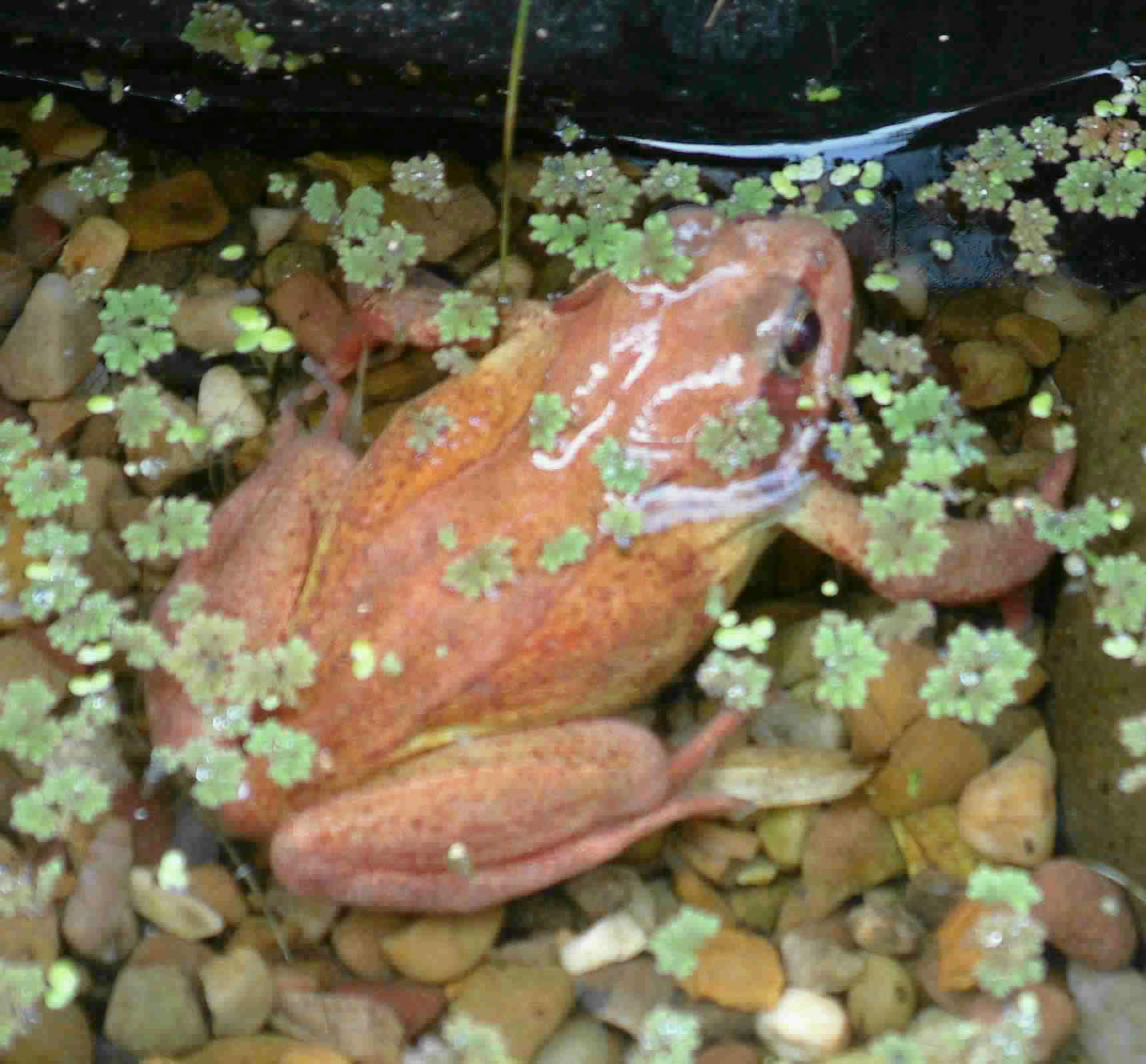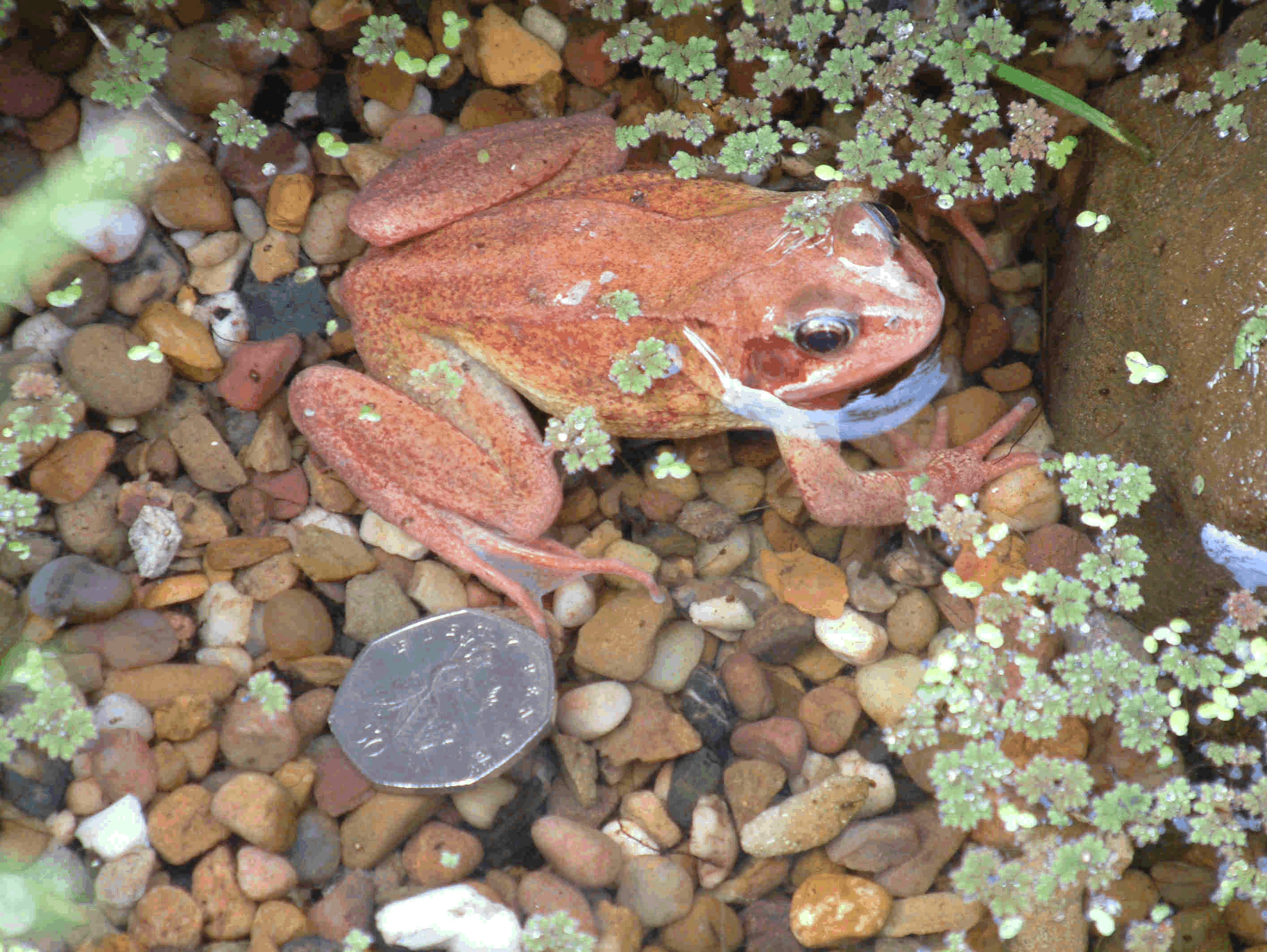

Recently a lady in Lancashire sent me an E-mail wondering whether she had a new species of frog in her pond. She normally had the Common Frog, Rana temporalia, in residence, but this one was orange-red, or as she put it, "the colour of the excess liquid in a tin of Heinz baked beans".
In fact this was the same species of frog, but one of the orange variants/phases/mutations (call it what you will) which have become increasingly common. I am grateful to the article "Albino Common Frogs" from Reptilian 3:7, which discusses this phenomenon (and which was helpful in answering my friend's query).
 |
 |
It appears that the first reported occurrence of orange frogs was in Truro in 1994. While the Common Frog can exhibit different colours other than the standard brown and green (mustard yellow, blackish, reddish or pinkish have been noted), this orange frog was a definite albino as it also had the red eyes. "Jaffa", as the frog became known, became something of a celebrity in the media and led to people reporting other cases in their own gardens. Not all of these were true albinos, but some were either fully or partially so.
Albinism and/or abnormal coloration for a species are not unusual in amphibians, and both phenomena are also found in reptiles ("melanism", the process whereby a creature appears to be almost or entirely black, being quite common). The question raised by the article, and indeed by the finding of orange frogs, raises the question as to whether this phenomenon is linked with others such as abnormal development of limbs in frogs which may be linked with climate change or chemical pollutants. Amphibians, far more than reptiles, are extraordinarily sensitive to environmental conditions due to their porous skin and life cycle, and have been called long-term indicators of change for that reason.
If you find that you have orange or unusually-coloured frogs in your garden or neighbourhood, it is probably worth letting your local wildlife group know. Your local public library will probably have details. There is no danger from these specimens, and paradoxically their own life is usually less safe as a result of this mutation, which instead of camouflaging them makes them stick out like a sore thumb to any passing predator. Your observations and recording of any such individuals may one day be of benefit not only to herpetologists and frog-fanciers but to mankind as a whole.
Reptilian Vol 3 Number 7, "Albino Common Frogs", author not named.
Thanks also to Dixon Milburn for her E-mail, and to Colin Northcott for his photographs!
Back to Anurans | Back to Amphibians | Back to Herps | Back to Home Page